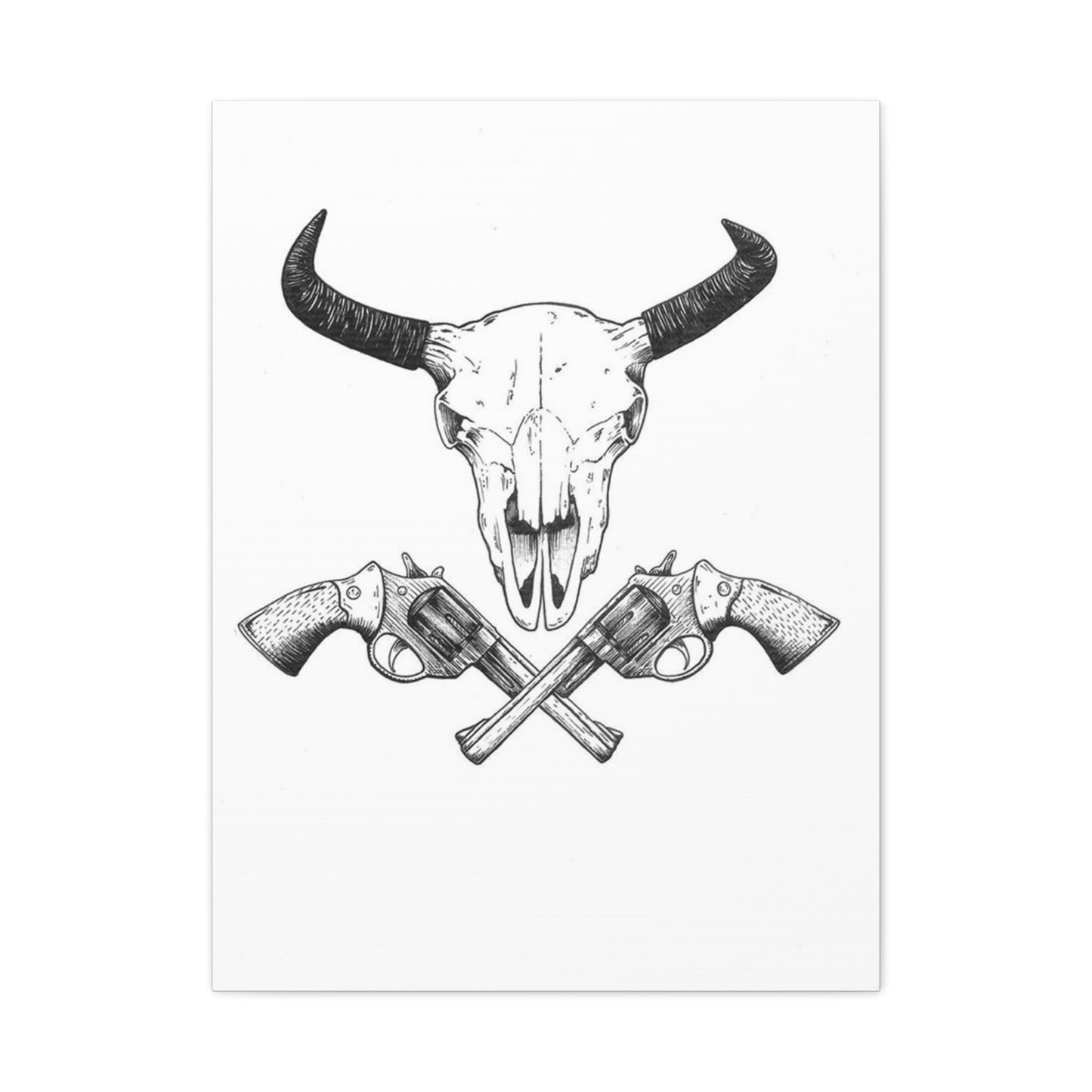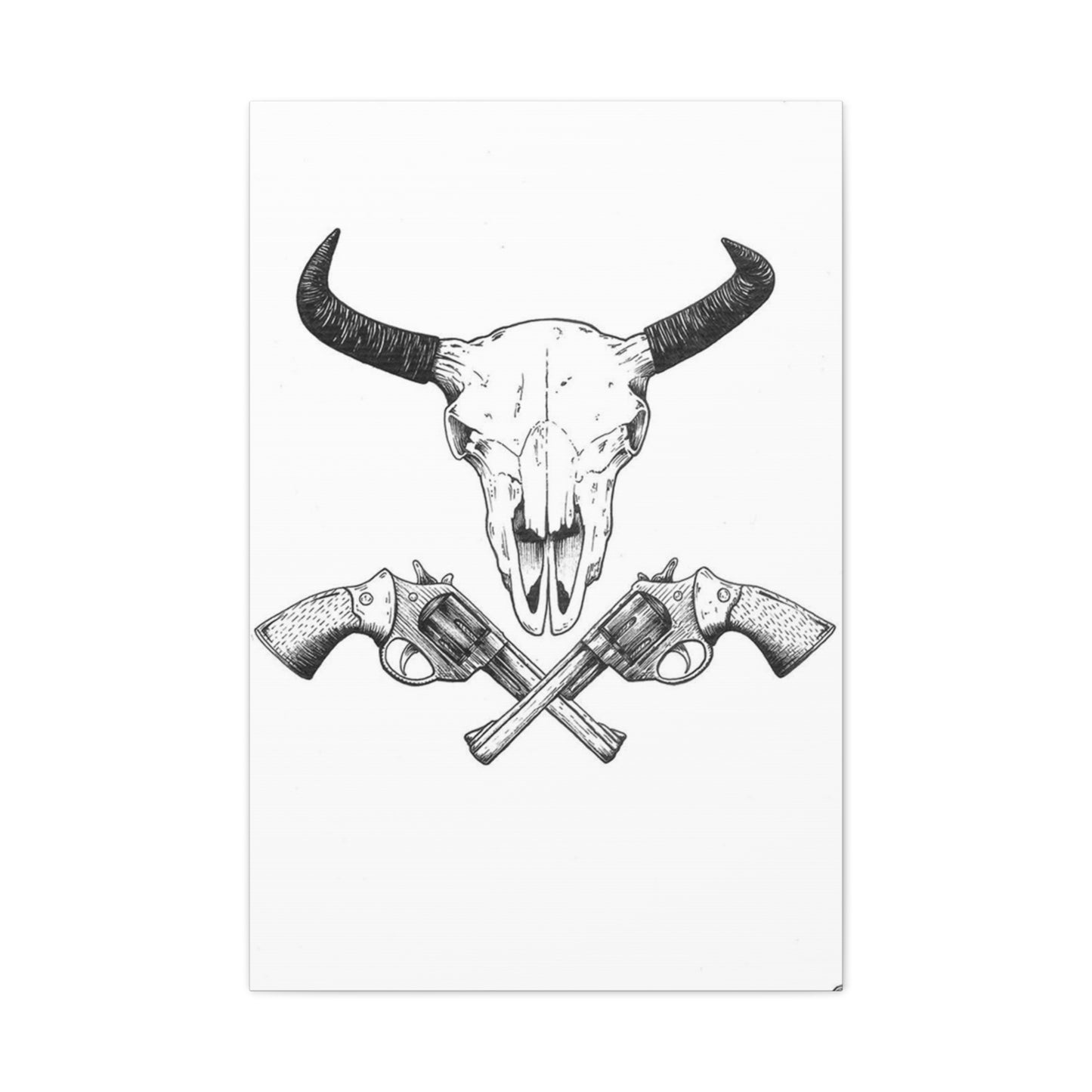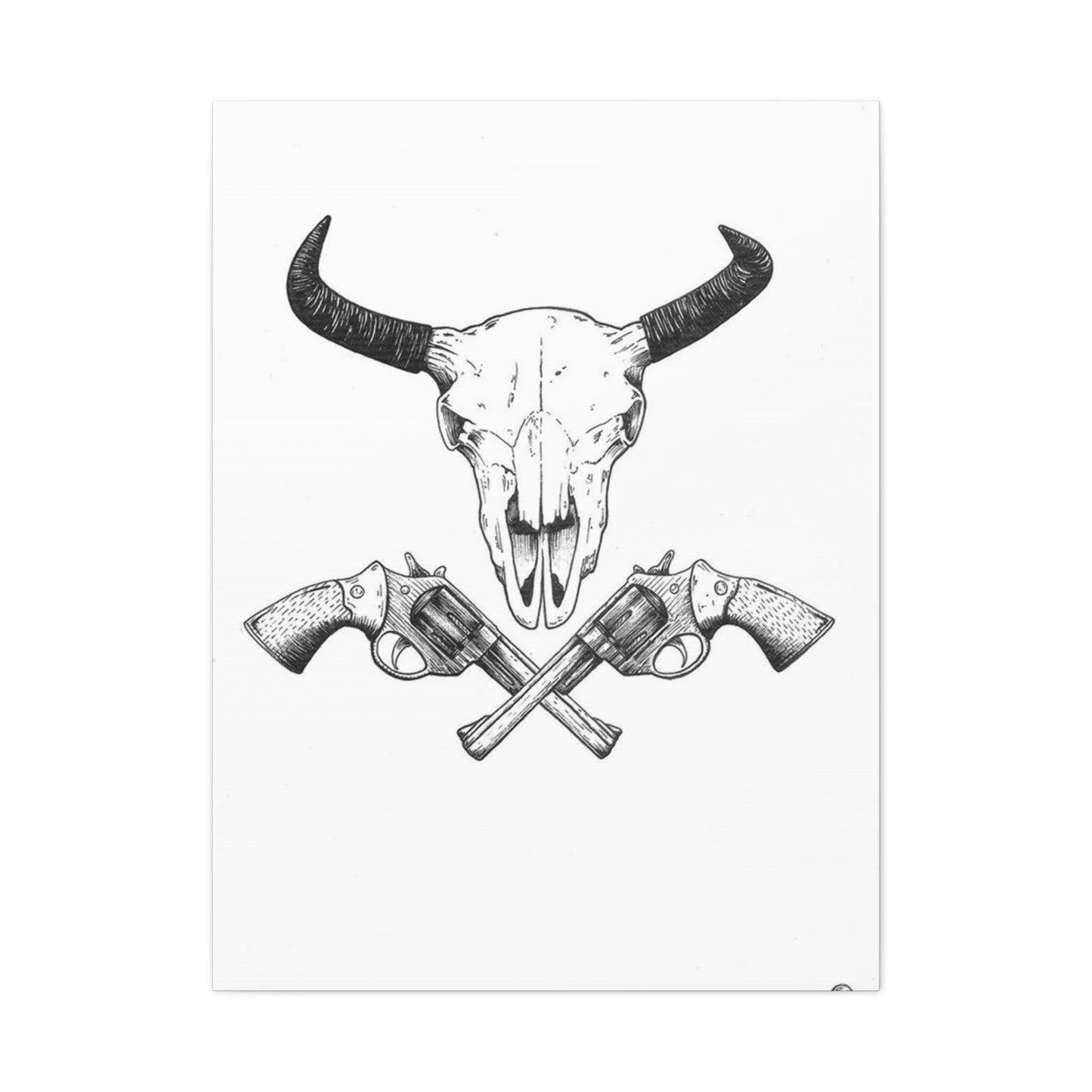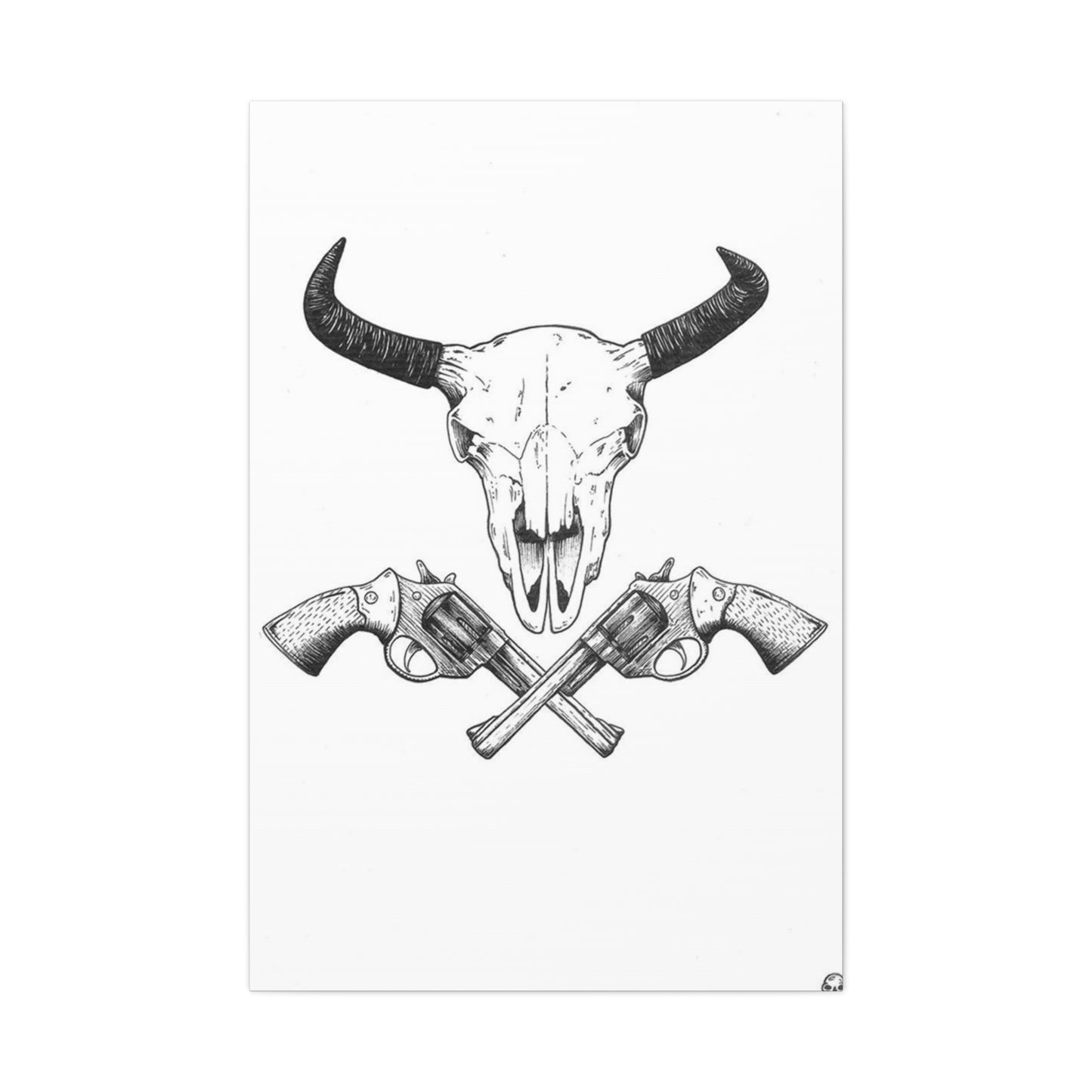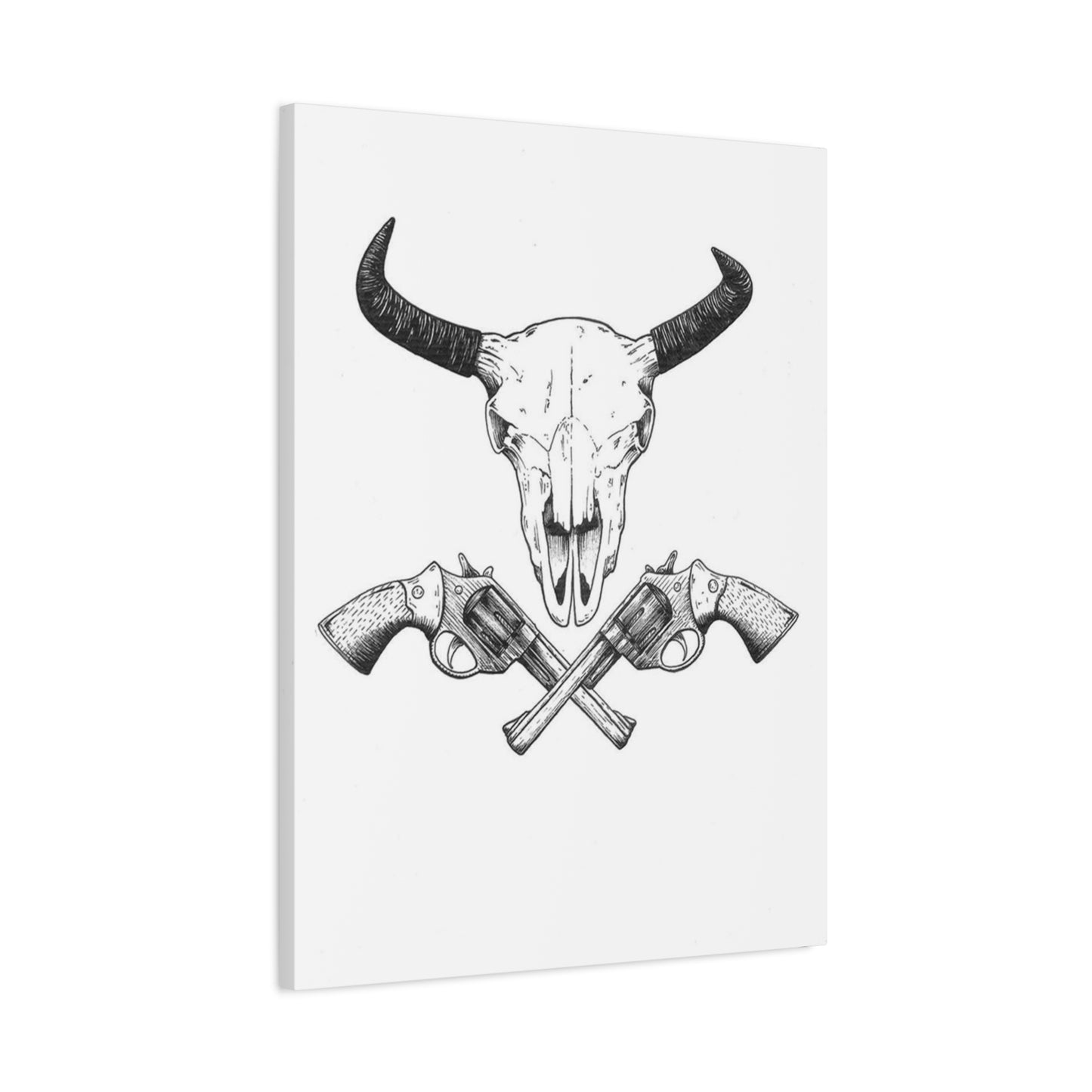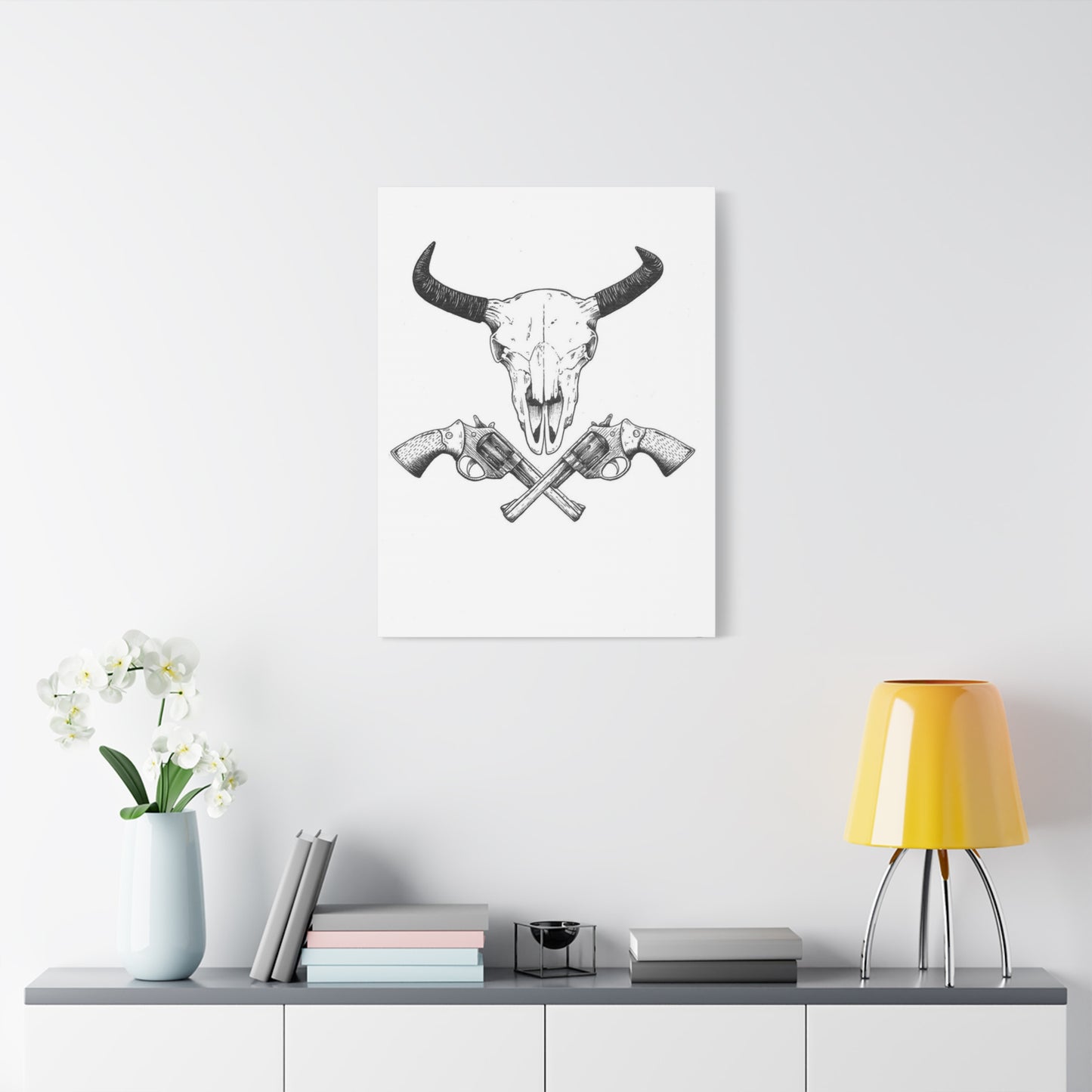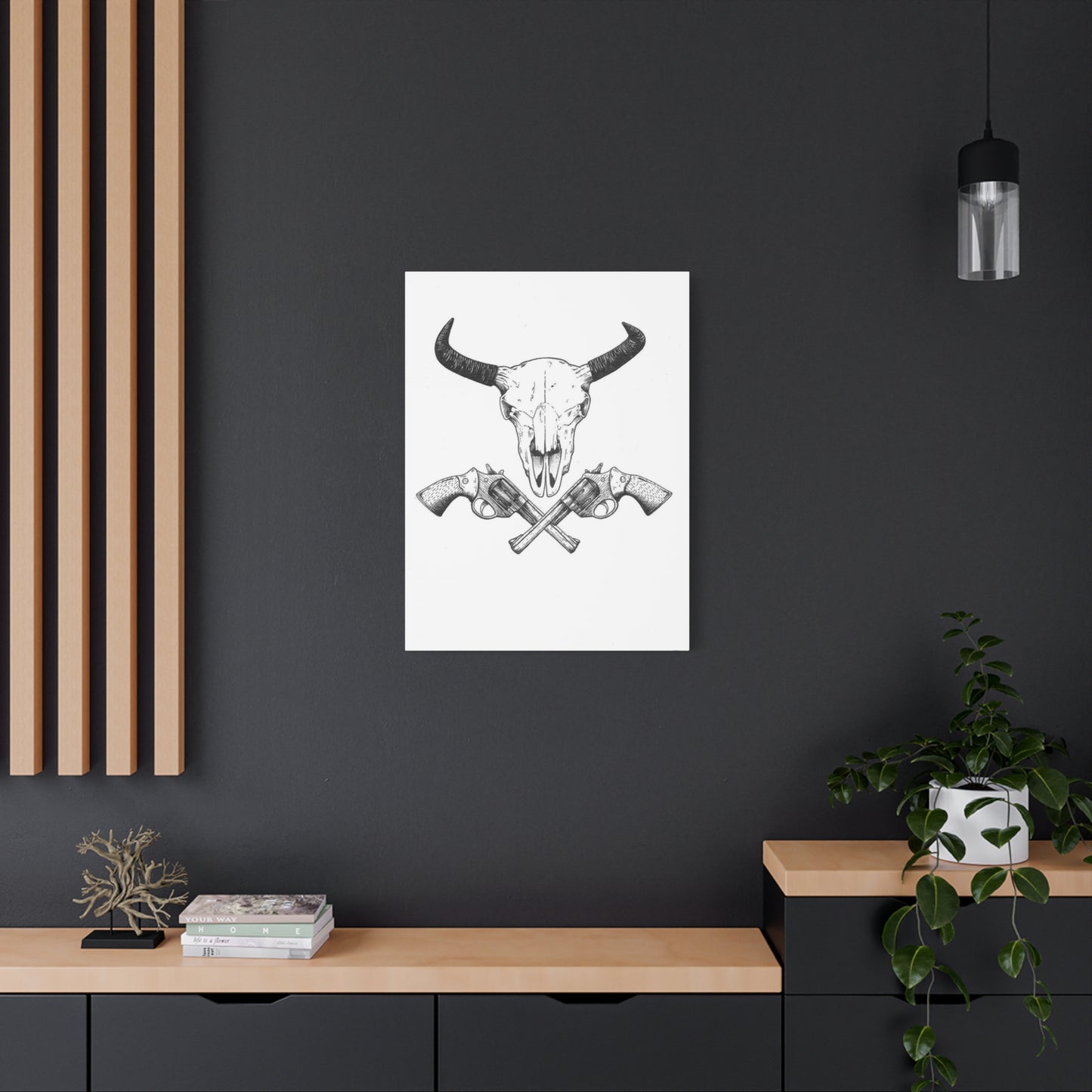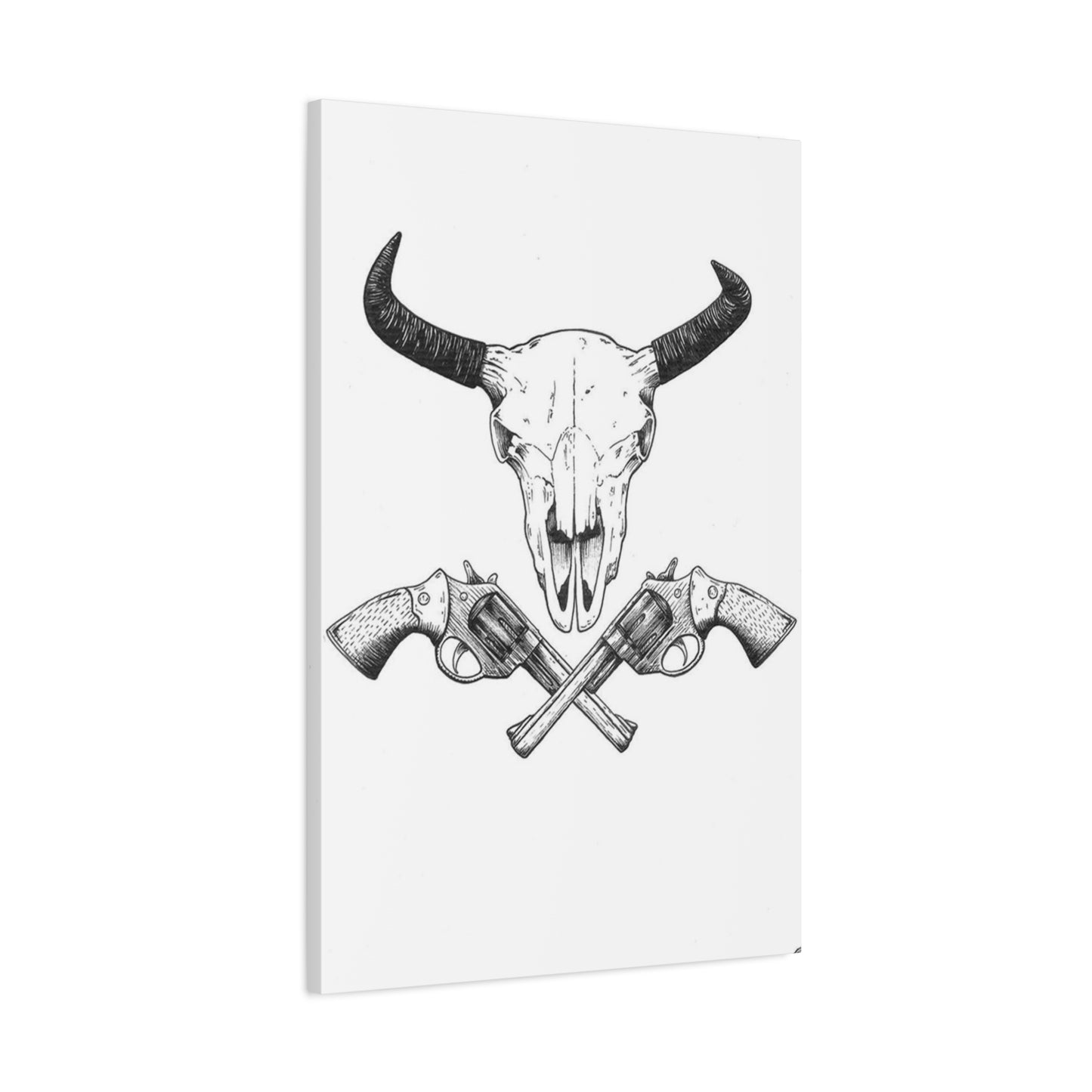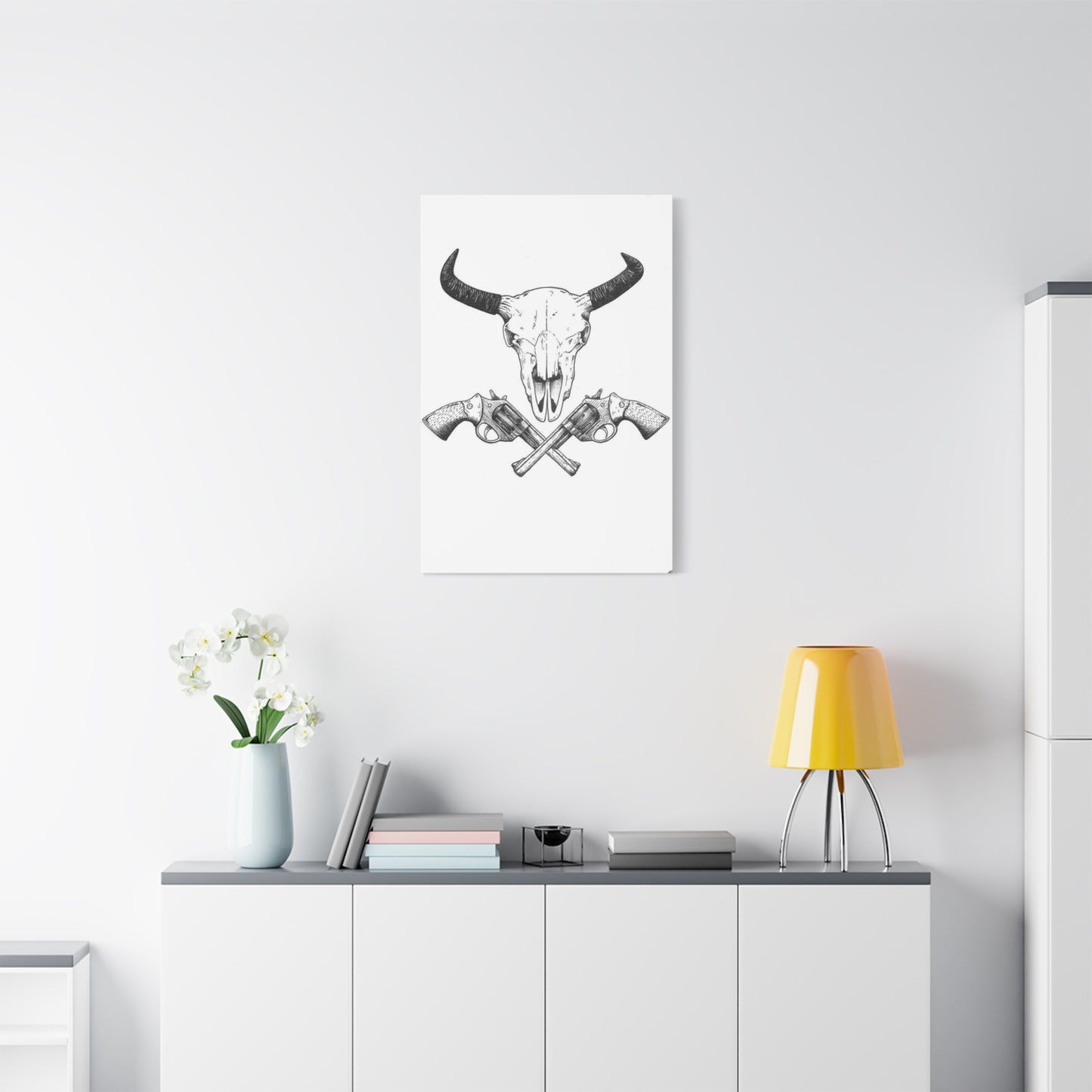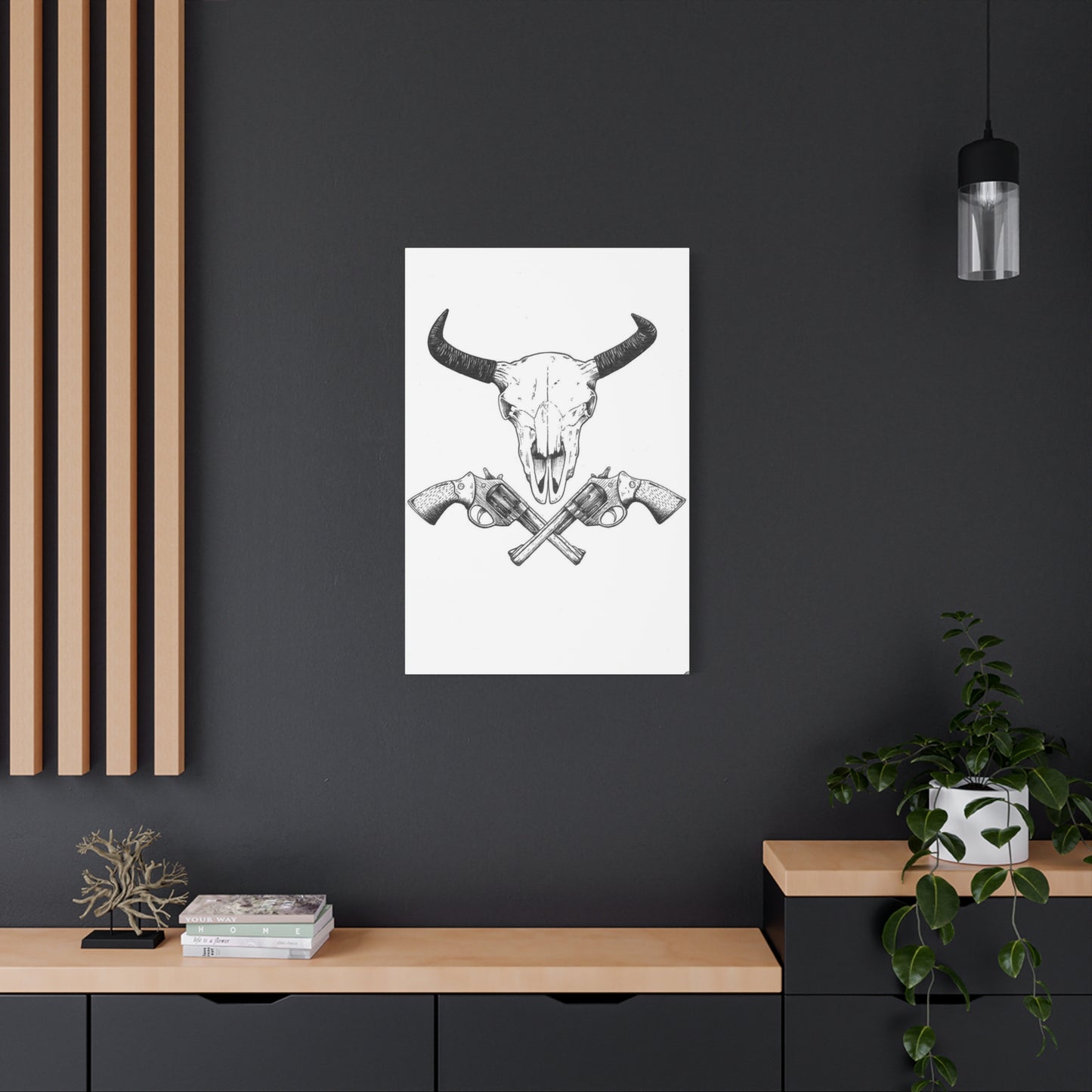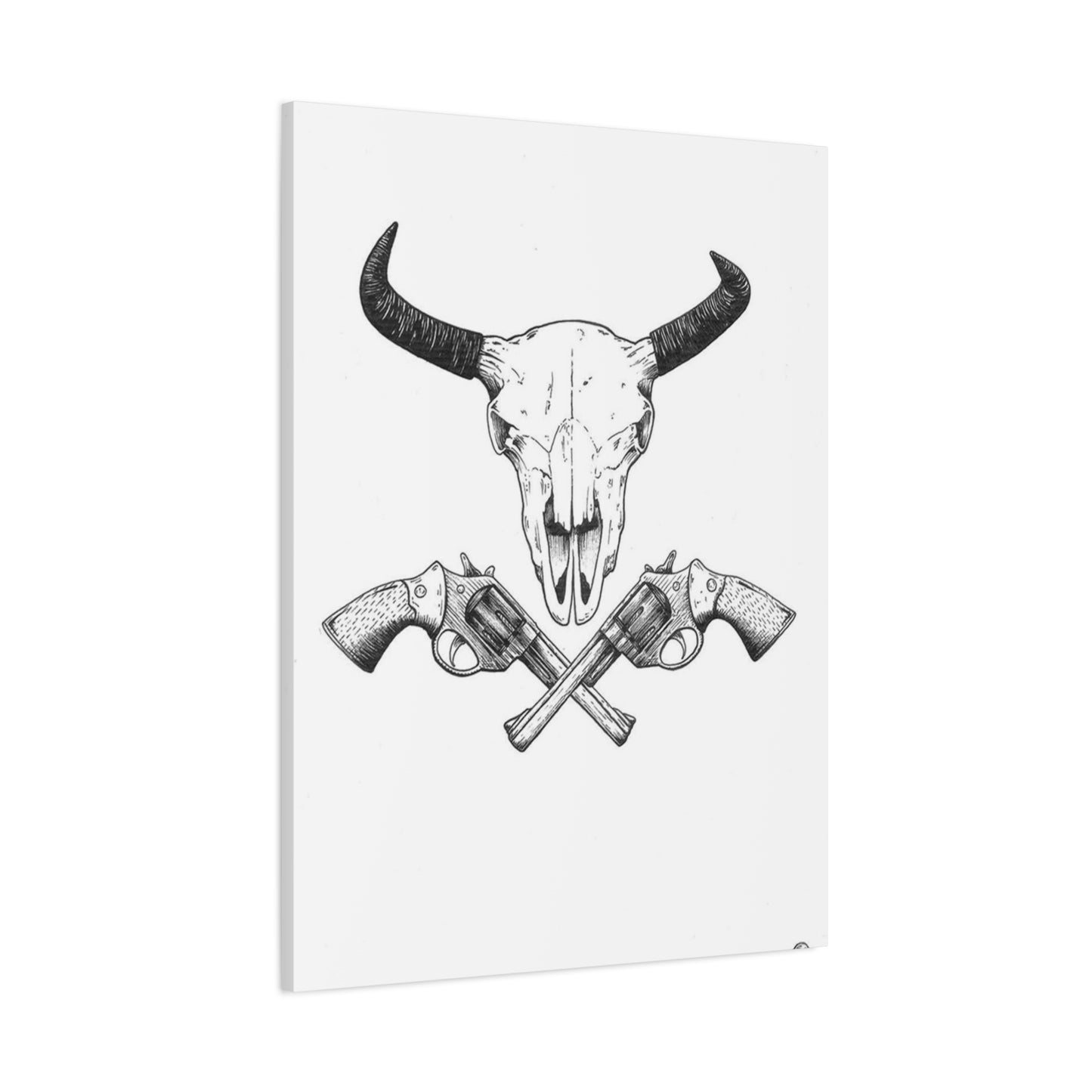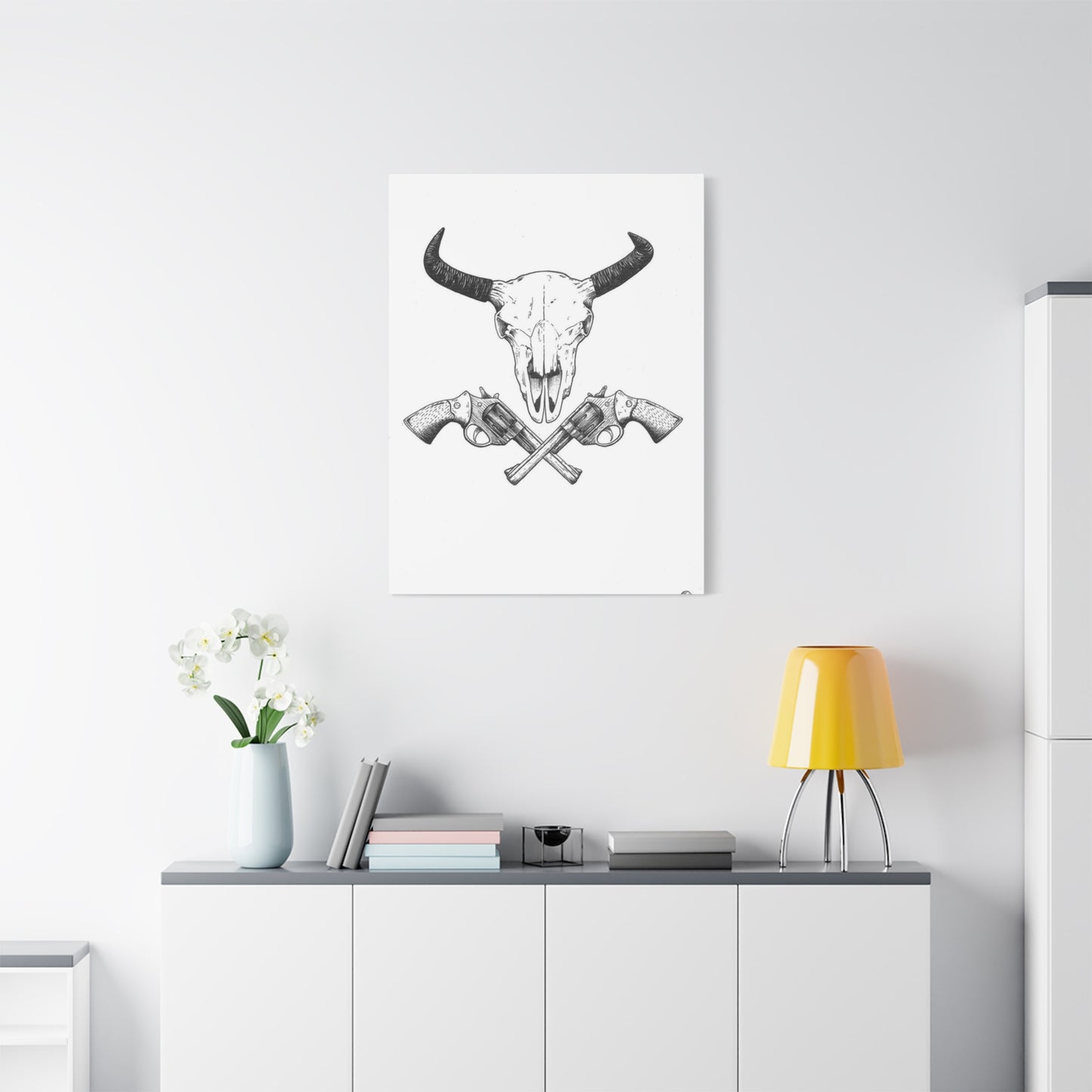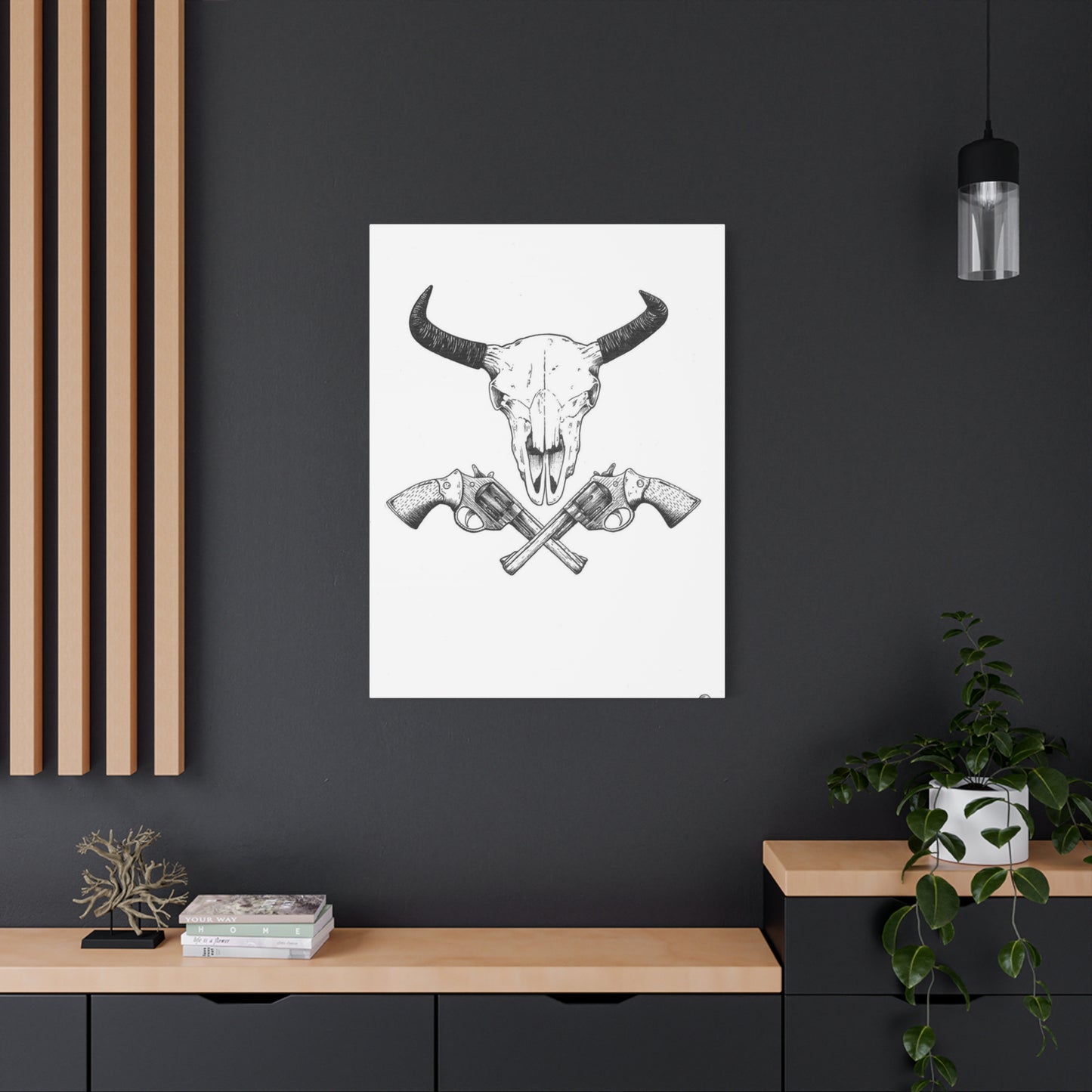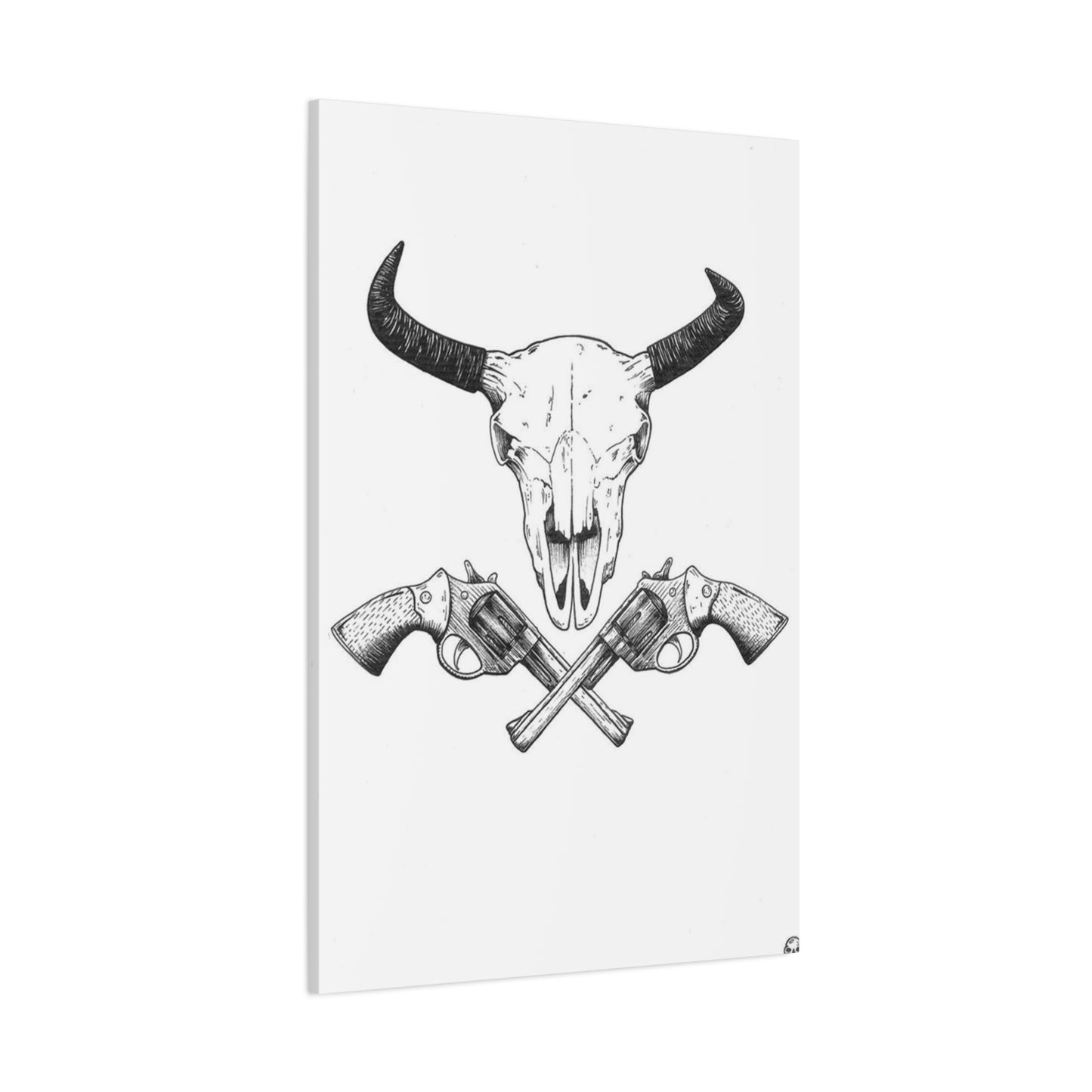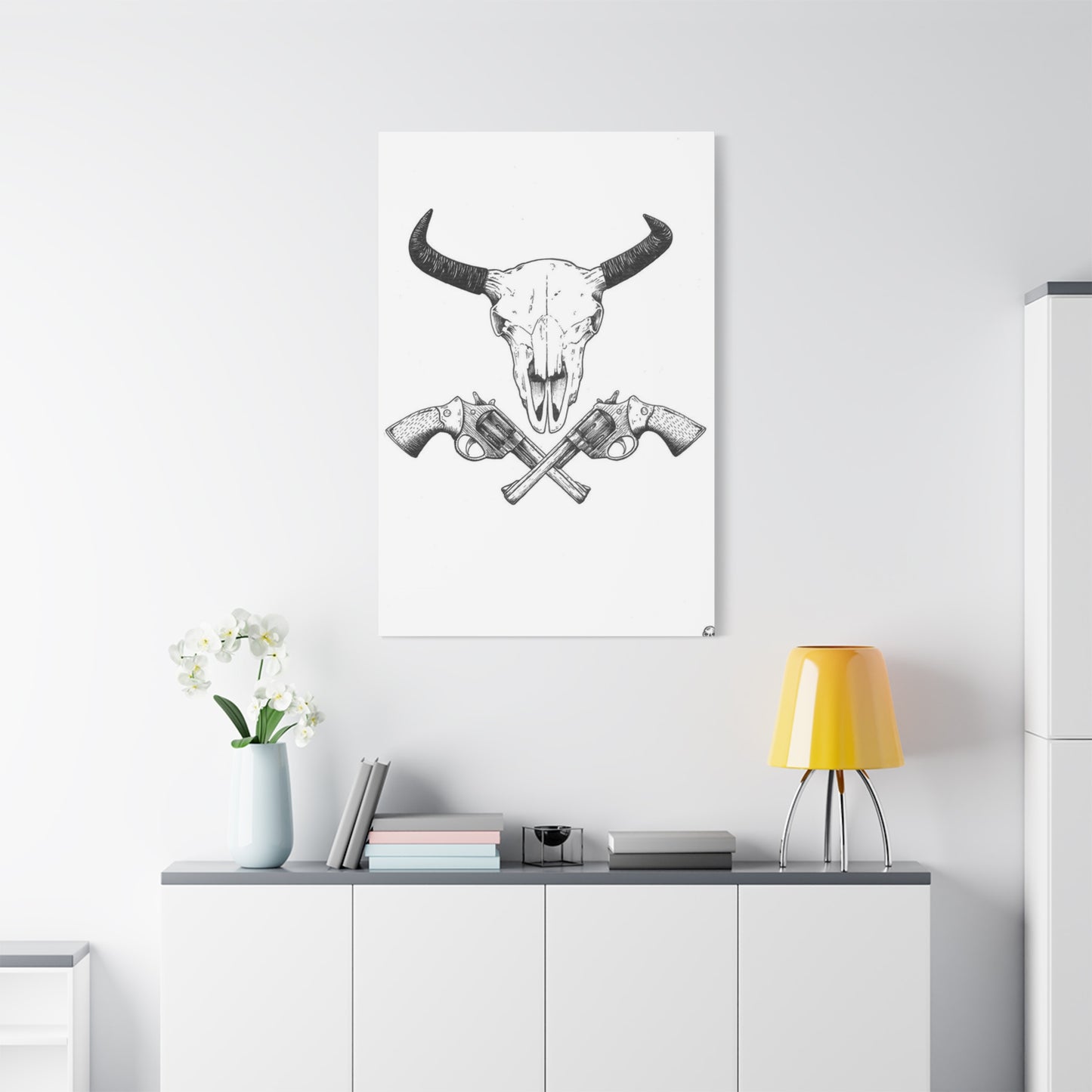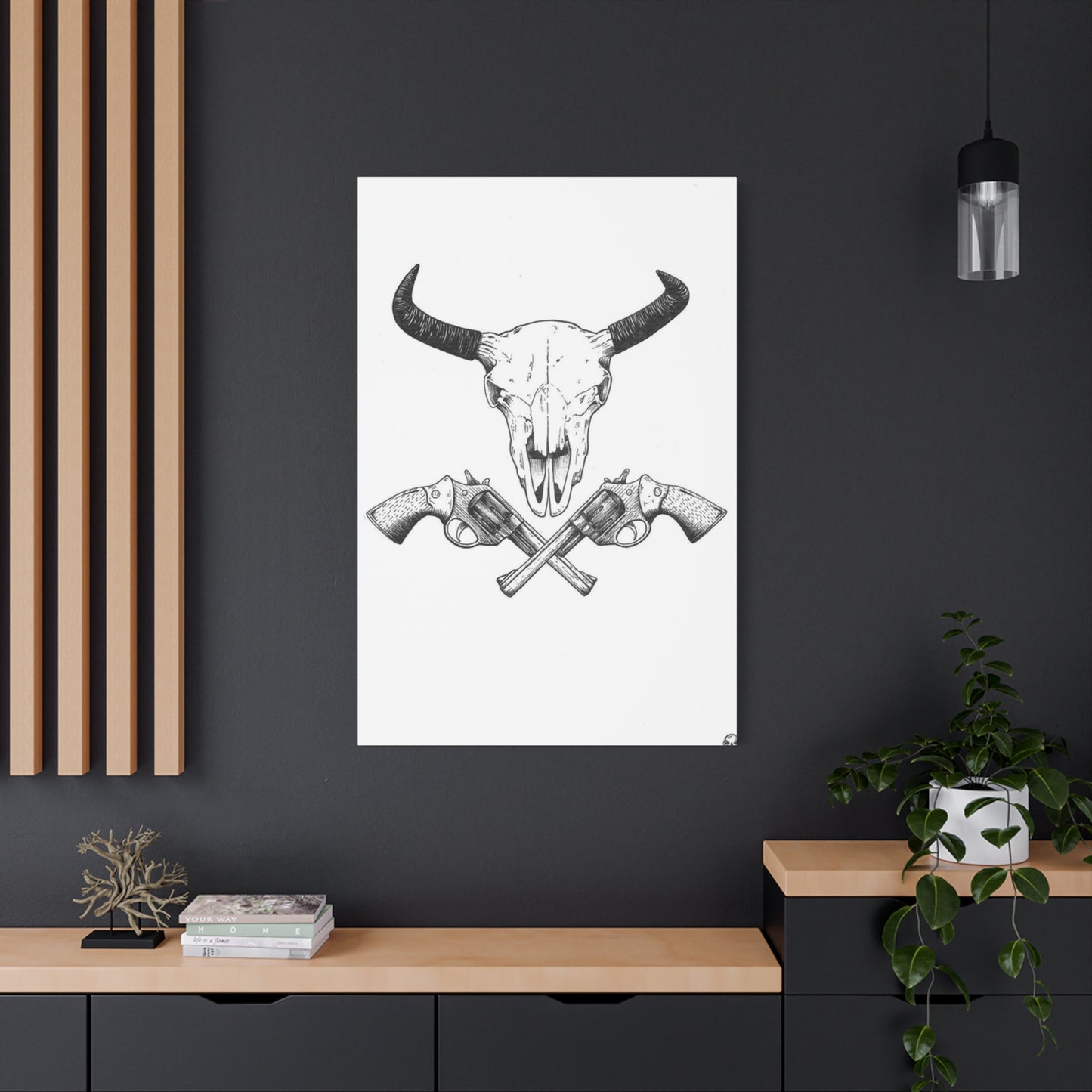Contemporary Visual Culture and the Rise of Gun Sketch Wall Art
The integration of firearm sketch artwork into contemporary living environments represents a fascinating intersection of artistic expression and modern aesthetic sensibilities. This approach to visual decoration challenges traditional boundaries while offering homeowners and collectors unique opportunities to showcase bold artistic statements within their personal environments.
Contemporary residential environments increasingly embrace unconventional artistic themes that provoke thought and stimulate conversation. Firearm sketch artwork serves this purpose exceptionally well, providing visual elements that command attention while maintaining sophisticated artistic merit. The key to successful integration lies in understanding the balance between provocative imagery and harmonious aesthetic composition.
When considering the placement of firearm sketch artwork within contemporary living environments, several factors merit careful consideration. The scale and proportion of the artwork must complement the architectural features of the room while maintaining appropriate visual weight within the overall design scheme. Large-scale pieces often work best as focal points in living rooms or dining areas, where they can command attention without overwhelming the surrounding elements.
The color palette of the surrounding environment plays a crucial role in how firearm sketch artwork is perceived and appreciated. Neutral backgrounds often enhance the dramatic impact of black and white sketches, while more colorful environments may benefit from artwork that incorporates subtle color accents or tonal variations that complement the existing palette.
Lighting considerations become particularly important when displaying firearm sketch artwork. Proper illumination can dramatically enhance the visual impact of detailed line work and shading techniques that characterize quality sketch artwork. Strategic placement of accent lighting or picture lights can create dramatic shadows and highlights that bring the artwork to life.
The psychological impact of firearm sketch artwork within living environments cannot be ignored. These pieces often generate strong emotional responses and can significantly influence the atmosphere of a room. Some individuals find such imagery empowering and thought-provoking, while others may feel uncomfortable or unsettled. Understanding these potential reactions is essential for making informed decisions about placement and presentation.
Contemporary living environments benefit from artwork that reflects the personalities and interests of the inhabitants. For collectors, enthusiasts, and individuals with connections to military or law enforcement backgrounds, firearm sketch artwork can serve as meaningful personal expression while maintaining artistic sophistication.
The conversation-starting potential of firearm sketch artwork makes it particularly suitable for social areas of the home where guests are entertained. These pieces often become focal points for discussions about art, history, politics, and personal experiences, enriching social interactions and creating memorable experiences for visitors.
Artistic Methods and Approaches in Firearm Sketch Creation
The creation of compelling firearm sketch artwork requires mastery of various artistic methods and approaches that bring these mechanical subjects to life through visual representation. Understanding these techniques provides insight into the skill and craftsmanship required to produce high-quality firearm sketch artwork.
Line work forms the foundation of exceptional firearm sketch artwork, requiring artists to develop precise control over their drawing implements. The quality of line work directly influences the overall impact and professional appearance of the finished piece. Master artists employ varying line weights to create depth, dimension, and visual hierarchy within their compositions.
Hatching and cross-hatching techniques prove essential for creating realistic textures and tonal variations in firearm sketch artwork. These methods allow artists to simulate the appearance of metal surfaces, wood grains, and other materials commonly found in firearm construction. The direction and density of hatching strokes contribute significantly to the three-dimensional quality of the artwork.
Shading techniques in firearm sketch artwork often employ dramatic contrasts between light and shadow to enhance the sculptural qualities of the subject matter. Artists must understand how light interacts with various surfaces and materials to create convincing representations. The interplay of highlights and shadows can transform a simple outline into a compelling three-dimensional representation.
Attention to mechanical detail distinguishes professional-quality firearm sketch artwork from amateur attempts. Artists must study the intricate mechanisms, proportions, and design elements that characterize different types of firearms. This knowledge enables them to create accurate representations that resonate with knowledgeable viewers while maintaining artistic appeal.
Composition plays a vital role in creating engaging firearm sketch artwork. Artists must consider the arrangement of elements within the picture plane, the use of negative space, and the overall visual balance of the piece. Dynamic compositions often feature dramatic angles, interesting perspectives, or multiple elements arranged in visually pleasing relationships.
The choice of drawing medium significantly impacts the final appearance and character of firearm sketch artwork. Graphite pencils offer precision and subtle tonal gradations, while charcoal provides rich, dramatic contrasts and bold textures. Pen and ink techniques create crisp, definitive lines that emphasize the mechanical precision of firearm subjects.
Scale considerations influence both the creation process and the final impact of firearm sketch artwork. Large-scale pieces allow for intricate detail work and dramatic presence, while smaller works may focus on capturing essential characteristics with economical mark-making. The intended display environment often dictates appropriate scale choices.
Contemporary firearm sketch artists increasingly experiment with mixed media approaches, combining traditional drawing techniques with digital elements, photography, or other artistic media. These hybrid approaches can create unique visual effects and expand the expressive possibilities of firearm sketch artwork.
Notable Artists Recognized for Firearm Sketch Artwork
The world of firearm sketch artwork has been enriched by numerous talented artists who have elevated this specialized genre through their skill, creativity, and unique perspectives. These artists have contributed significantly to the development and recognition of firearm sketch artwork as a legitimate and compelling form of artistic expression.
Historical military artists have long incorporated firearm imagery into their work, creating detailed studies of weapons and equipment that serve both artistic and documentary purposes. These artists often possessed firsthand knowledge of their subjects, having served in military capacities or worked closely with military organizations. Their work provides valuable historical records while demonstrating exceptional technical skill.
Contemporary urban artists have embraced firearm sketch imagery as a means of social commentary and cultural expression. These artists often address complex issues related to violence, power, protection, and urban life through their firearm-themed artwork. Their work frequently appears in galleries, public murals, and alternative art venues.
Military history enthusiasts who have developed artistic skills often create compelling firearm sketch artwork that combines historical accuracy with artistic interpretation. These artist-historians bring deep knowledge of historical firearms and military equipment to their work, creating pieces that serve educational purposes while maintaining aesthetic appeal.
Professional illustrators working in gaming, film, and publishing industries frequently create firearm sketch artwork for commercial applications. Their work often emphasizes dramatic visual impact and stylized interpretation rather than strict realism. These artists have contributed to the popularization of firearm imagery in popular culture.
Fine art photographers who work with sketch-like treatments of their images have created compelling firearm artwork that blurs the boundaries between photography and drawing. These artists often employ digital manipulation techniques to achieve sketch-like effects while maintaining the precision and detail possible through photographic media.
Street artists and graffiti artists have incorporated firearm sketch imagery into their work as elements of larger compositions or as standalone pieces. This urban artistic movement has contributed to the democratization of firearm sketch artwork, making it accessible to broader audiences through public display.
Tattoo artists represent another significant group of professionals working with firearm sketch imagery. Their work, while temporary in the context of individual pieces, has contributed to the visual vocabulary and stylistic development of firearm sketch artwork. Many tattoo designs later inspire or influence artwork created for traditional display.
Academic artists working within educational institutions have explored firearm sketch artwork as part of broader studies in still life drawing, mechanical illustration, and social commentary. Their work often emphasizes technical excellence and conceptual depth, contributing to the intellectual legitimacy of the genre.
Cultural and Social Influence of Firearm Imagery in Visual Art
The presence of firearm imagery in visual art continues to generate significant cultural and social discourse, reflecting complex relationships between art, society, politics, and personal expression. Understanding these influences provides important context for appreciating firearm sketch artwork and its place within contemporary visual culture.
Historical contexts reveal that firearm imagery has appeared in visual art for centuries, often reflecting the technological, political, and social realities of different eras. Medieval and Renaissance artworks frequently depicted weapons as symbols of power, protection, or divine authority. These historical precedents establish a long-standing tradition of incorporating weapon imagery into artistic expression.
Contemporary society's relationship with firearm imagery in art reflects current debates about gun violence, personal protection, military action, and individual rights. Artists working with firearm themes often find themselves positioned within these broader cultural conversations, whether intentionally or inadvertently. Their work becomes part of the ongoing social dialogue about these complex issues.
The psychological impact of firearm imagery varies significantly among different audience members, influenced by personal experiences, cultural background, political beliefs, and individual sensitivities. Some viewers find firearm artwork empowering, protective, or aesthetically appealing, while others may experience discomfort, fear, or moral objection. These varied responses contribute to the provocative nature of firearm sketch artwork.
Educational institutions face particular challenges when displaying or teaching about firearm sketch artwork, balancing artistic freedom with sensitivity to diverse student populations and community concerns. These institutional considerations influence how firearm artwork is presented, discussed, and interpreted within academic contexts.
Media representation of firearm sketch artwork often focuses on controversial aspects rather than artistic merit, potentially skewing public perception of the genre. This media treatment can influence how artists, collectors, and viewers approach firearm sketch artwork, sometimes creating barriers to appreciation or understanding.
International perspectives on firearm imagery in art vary significantly based on different cultural attitudes toward weapons, violence, and artistic expression. Countries with restrictive gun laws may view firearm artwork differently than nations with strong gun ownership traditions. These cultural variations influence the creation, exhibition, and reception of firearm sketch artwork.
The commercialization of firearm imagery through various consumer products and media has influenced how firearm sketch artwork is perceived and valued. This commercial presence can both legitimize and trivialize artistic expressions involving firearm themes, creating complex relationships between art and commerce.
Social media platforms have transformed how firearm sketch artwork is shared, discussed, and criticized, creating new opportunities for exposure while also generating new forms of controversy and censorship. Artists must navigate platform policies and community guidelines while seeking to share their work with appropriate audiences.
Monochromatic Firearm Sketches and Minimalist Aesthetic Approaches
The application of monochromatic techniques to firearm sketch artwork represents a sophisticated approach to visual expression that emphasizes form, composition, and emotional impact over decorative color elements. This minimalist aesthetic philosophy creates powerful visual statements while maintaining refined artistic sensibilities.
Black and white firearm sketches possess inherent dramatic power that derives from high contrast relationships and simplified tonal ranges. The absence of color focuses viewer attention on essential elements such as form, texture, line quality, and compositional balance. This concentrated focus often results in more impactful and memorable artistic experiences.
Minimalist approaches to firearm sketch artwork embrace the principle that effective visual communication can be achieved through reduction rather than addition. By eliminating extraneous elements and focusing on essential characteristics, artists create works that communicate clearly and forcefully. This philosophical approach aligns well with the mechanical precision and functional design of firearm subjects.
Tonal gradation techniques become particularly important in monochromatic firearm sketch artwork, as artists must rely on subtle variations in value to create depth, dimension, and visual interest. Master artists develop sophisticated understanding of how different tonal relationships affect perception and emotional response.
The use of negative space in minimalist firearm sketch artwork serves multiple purposes, providing visual rest areas, emphasizing positive forms, and creating dynamic compositional balance. Strategic use of negative space can enhance the impact of depicted elements while maintaining clean, uncluttered aesthetic appeal.
Texture representation in monochromatic firearm sketches requires careful consideration of mark-making techniques and surface treatment. Artists must convey the characteristics of metal, wood, plastic, and fabric surfaces using only variations in line, tone, and texture. This limitation often leads to innovative and expressive mark-making approaches.
Contemporary minimalist philosophy influences how firearm sketch artists approach their subjects, encouraging focus on essential elements while eliminating unnecessary details or decorative additions. This approach can create more universally appealing artwork that transcends specific cultural or historical contexts.
The emotional impact of monochromatic firearm sketch artwork often proves more intense than color alternatives, as viewers focus entirely on form and content without color-related distractions. This concentrated attention can enhance both positive and negative emotional responses to firearm imagery.
Display considerations for monochromatic firearm sketch artwork emphasize the importance of appropriate framing, matting, and presentation techniques that complement the minimalist aesthetic. Simple, clean presentation methods often work best, allowing the artwork to speak without competing with elaborate decorative elements.
Precision and Linear Elements in Firearm Sketch Artwork
The success of firearm sketch artwork depends heavily on the artist's mastery of precision and linear elements that capture the mechanical sophistication and functional beauty of firearm subjects. These technical aspects separate professional-quality artwork from amateur attempts and contribute significantly to the overall impact and credibility of the finished pieces.
Line weight variation serves as a fundamental technique for creating hierarchy, depth, and visual interest within firearm sketch compositions. Artists must develop sensitivity to how different line weights affect perception and emotional response. Heavier lines often indicate closer objects or areas of emphasis, while lighter lines suggest distance or secondary importance.
Mechanical accuracy in firearm sketch artwork requires artists to understand the actual construction and proportions of their subjects. Inaccurate representations can immediately identify artwork as amateur or unreliable, undermining the credibility of the piece. Serious artists often study actual firearms or detailed reference materials to ensure accuracy.
Perspective considerations become particularly challenging when depicting complex mechanical objects like firearms. Artists must understand how three-dimensional forms appear from various viewing angles and how perspective affects the perception of size, proportion, and spatial relationships. Incorrect perspective can destroy the illusion of dimensionality.
Surface texture representation through linear techniques requires sophisticated understanding of how different materials reflect light and cast shadows. Metal surfaces exhibit different characteristics than wood, plastic, or fabric components. Artists must develop varied approaches to convincingly represent these diverse material qualities.
Technical illustration principles often inform the creation of firearm sketch artwork, particularly when accuracy and clarity are prioritized over artistic interpretation. These principles include consistent line weights, systematic shading approaches, and standardized representation techniques that ensure clear communication of form and function.
Cross-hatching and hatching techniques provide traditional methods for creating tonal variations and surface textures in firearm sketch artwork. The direction, spacing, and intensity of these mark-making approaches significantly influence the final appearance and professional quality of the artwork. Master artists develop personal vocabularies of mark-making techniques.
Contemporary digital tools offer new possibilities for achieving precision in firearm sketch artwork while maintaining traditional aesthetic qualities. Digital drawing programs can provide perfect geometric accuracy while allowing artists to maintain the spontaneous, hand-drawn quality that characterizes traditional sketch artwork.
The balance between technical accuracy and artistic expression challenges firearm sketch artists to create work that satisfies both practical and aesthetic requirements. Overly technical approaches may lack artistic appeal, while overly artistic interpretations may sacrifice credibility and impact.
Utilizing Firearm Sketch Artwork for Personal Expression and Commentary
The incorporation of firearm sketch artwork into personal environments serves purposes beyond mere decoration, offering opportunities for individual expression, social commentary, and the communication of personal values or experiences. Understanding these deeper motivations provides insight into why individuals choose to display controversial or provocative artwork.
Personal history and experience often influence decisions to display firearm sketch artwork. Military veterans, law enforcement officers, hunting enthusiasts, and collectors may find personal meaning in artwork that reflects their professional or recreational interests. These personal connections transform artwork from mere decoration into meaningful personal expression.
Political statement-making through firearm sketch artwork represents one of the most controversial applications of this art form. Individuals may choose to display such artwork as expressions of their political beliefs regarding gun rights, personal protection, or opposition to gun control legislation. These political dimensions add layers of meaning to artistic appreciation.
Cultural identity expression through firearm sketch artwork occurs in communities where firearms play significant roles in traditional activities, occupational pursuits, or cultural practices. Rural communities, military families, and certain ethnic or regional groups may embrace firearm imagery as part of their cultural heritage.
Conversation initiation represents a significant motivation for displaying firearm sketch artwork. These pieces often serve as catalysts for discussions about art, politics, history, and personal experiences. Homeowners may intentionally choose provocative artwork to stimulate meaningful conversations with guests and visitors.
Masculinity expression through firearm sketch artwork reflects complex relationships between gender identity and visual culture. Some individuals, particularly men, may be drawn to firearm imagery as expressions of strength, protection, or traditional masculine values. These gender associations influence both creation and appreciation of firearm sketch artwork.
Rebellion against conventional aesthetic norms motivates some individuals to choose firearm sketch artwork as alternatives to traditional decorative subjects. This rebellious aspect can appeal to individuals seeking to distinguish their personal environments from mainstream decorative approaches.
Historical interest drives many collectors and enthusiasts to acquire firearm sketch artwork that depicts historically significant weapons or military equipment. These individuals often possess deep knowledge of military history and appreciate artwork that accurately represents historical subjects.
Professional identity expression occurs among individuals whose careers involve firearms, including military personnel, law enforcement officers, security professionals, and industry workers. Firearm sketch artwork can serve as reminders of professional dedication and expertise.
Comparative Analysis of Abstract and Realistic Firearm Sketch Approaches
The artistic interpretation of firearm subjects encompasses a broad spectrum of approaches, ranging from highly realistic technical illustrations to completely abstract interpretations that emphasize emotional impact over literal representation. Understanding these different approaches provides insight into the varied possibilities within firearm sketch artwork.
Realistic firearm sketch artwork prioritizes accuracy, detail, and recognizable representation of specific firearms or firearm types. Artists working in realistic styles often possess extensive knowledge of their subjects and may use detailed reference materials to ensure accuracy. The appeal of realistic approaches lies in their ability to clearly communicate information while maintaining artistic quality.
Photorealistic techniques in firearm sketch artwork aim to achieve the highest possible levels of detail and accuracy, often rivaling or exceeding photographic quality. Artists employing photorealistic approaches must possess exceptional technical skills and patience, as these works typically require extensive time investments and meticulous attention to detail.
Abstract interpretations of firearm subjects emphasize emotional impact, symbolic meaning, or artistic expression over literal representation. Abstract firearm sketch artwork may reduce subjects to essential shapes, lines, or gestures while maintaining enough recognizable elements to identify the subject matter. These approaches often prove more universally acceptable while maintaining artistic sophistication.
Stylized approaches to firearm sketch artwork occupy middle ground between realistic and abstract extremes, incorporating recognizable elements while emphasizing particular aesthetic qualities or artistic philosophies. Stylized artwork may exaggerate certain features, simplify complex details, or apply consistent artistic treatments that create unified visual appearance.
Expressionistic firearm sketch artwork prioritizes emotional content over realistic representation, using distortion, exaggeration, or unconventional techniques to convey feelings, attitudes, or psychological states. These approaches can make firearm subjects more approachable for viewers uncomfortable with realistic weapon imagery.
Cubist influences in firearm sketch artwork involve breaking subjects into geometric forms and reassembling them in non-naturalistic arrangements. These approaches can create intellectually stimulating artwork that challenges conventional perception while maintaining recognizable connections to firearm subjects.
Surrealistic approaches to firearm sketch artwork may combine realistic rendering techniques with impossible or dreamlike scenarios, creating thought-provoking images that explore subconscious associations and symbolic meanings. These approaches often generate strong emotional responses and memorable visual experiences.
The choice between abstract and realistic approaches often depends on intended audience, display environment, and artistic goals. Realistic approaches may appeal more to technical audiences and collectors, while abstract interpretations might prove more suitable for general audiences or controversial display situations.
Presentation and Display Methods for Firearm Sketch Artwork
The effective presentation and display of firearm sketch artwork requires careful consideration of framing, matting, lighting, and environmental factors that influence how the artwork is perceived and appreciated. Professional presentation techniques can significantly enhance the impact and perceived value of firearm sketch artwork.
Frame selection for firearm sketch artwork should complement the artistic style and subject matter while avoiding competition with the artwork itself. Simple, clean frame designs often work best, particularly for minimalist or contemporary pieces. Traditional frames may be appropriate for historical subjects or classical artistic approaches.
Matting considerations become particularly important for paper-based firearm sketch artwork, as proper matting provides protection while enhancing visual presentation. Neutral mat colors typically work well, though creative matting choices can add visual interest or complement specific color schemes within the artwork.
Glazing options for framed firearm sketch artwork include regular glass, UV-protective glass, and anti-reflective coatings that reduce glare and protect artwork from environmental damage. Conservation-quality materials become important for valuable or irreplaceable pieces that require long-term protection.
Lighting design for firearm sketch artwork display should emphasize the dramatic qualities of the work while avoiding damage from excessive exposure. LED picture lights offer energy efficiency and reduced heat generation, while track lighting systems provide flexibility for multiple pieces or changing displays.
Gallery-style presentation techniques can elevate firearm sketch artwork to museum-quality display standards. These approaches emphasize clean, uncluttered presentation that focuses attention on the artwork itself while maintaining professional appearance standards.
grouping strategies for multiple firearm sketch pieces require careful consideration of size relationships, visual balance, and thematic connections. Successful groupings create cohesive visual statements while allowing individual pieces to maintain their distinct characteristics and appeal.
Environmental considerations for displaying firearm sketch artwork include protection from direct sunlight, excessive humidity, temperature fluctuations, and physical damage. Proper environmental control ensures long-term preservation while maintaining optimal viewing conditions.
Security concerns may influence display decisions for valuable firearm sketch artwork, particularly in commercial or public settings. Discrete security measures should protect artwork without interfering with aesthetic presentation or viewer enjoyment.
Ethical Considerations and Debates Surrounding Firearm Artwork
The creation and display of firearm sketch artwork raises complex ethical questions that reflect broader social debates about violence, artistic freedom, cultural sensitivity, and personal responsibility. Understanding these ethical dimensions provides important context for artists, collectors, and viewers engaging with firearm-themed artwork.
Artistic freedom arguments support the right of artists to explore any subject matter, including controversial topics like firearms, without censorship or restriction. Proponents of this position argue that art serves important social functions by provoking thought, challenging assumptions, and reflecting cultural realities. They contend that limiting artistic subject matter undermines fundamental creative freedoms.
Social responsibility perspectives suggest that artists should consider the potential impacts of their work on society, particularly regarding subjects like firearms that are associated with violence and tragedy. Advocates of this position argue that artistic freedom carries corresponding responsibilities to consider community welfare and individual sensitivities.
Cultural sensitivity concerns arise when firearm sketch artwork is displayed in diverse communities where different groups may have varying experiences with gun violence, military service, or cultural traditions involving firearms. Balancing artistic expression with community harmony presents ongoing challenges for institutions and individuals.
Educational contexts present particular ethical challenges when incorporating firearm sketch artwork into curricula or displays. Educational institutions must balance artistic education goals with sensitivity to student populations and community concerns while maintaining academic freedom and intellectual honesty.
Commercial exploitation concerns address situations where firearm imagery is used primarily for profit without regard for artistic merit or social impact. Critics argue that commercialization of weapon imagery can trivialize serious subjects and contribute to cultural desensitization to violence.
Victim sensitivity issues consider the potential impact of firearm imagery on individuals who have experienced gun violence, military trauma, or related losses. Ethical display practices may require trigger warnings, alternative viewing options, or careful consideration of placement and context.
International perspectives on firearm artwork ethics vary significantly based on different cultural attitudes toward weapons, violence, and artistic expression. What may be considered acceptable artistic expression in one culture might be viewed as offensive or dangerous in another cultural context.
Platform and venue responsibility questions address the obligations of galleries, museums, educational institutions, and online platforms when displaying or hosting firearm sketch artwork. These organizations must balance support for artistic expression with responsibility to their audiences and communities.
Creating Personal Firearm Sketch Artwork Projects
The creation of personal firearm sketch artwork projects offers individuals opportunities to develop artistic skills while exploring subjects of personal interest or significance. This hands-on approach provides deeper appreciation for the technical challenges and creative possibilities within firearm sketch artwork.
Reference material collection forms the foundation of successful firearm sketch projects. High-quality photographs, actual firearms (where legally accessible), museum displays, and technical illustrations provide essential visual information for accurate representation. Digital resources have expanded access to reference materials for artists worldwide.
Drawing tool selection significantly influences the final appearance and working process of firearm sketch artwork. Pencils offer control and subtlety, while pens provide crisp lines and permanent marks. Charcoal creates dramatic contrasts and expressive textures. Digital tools combine traditional aesthetics with modern convenience and flexibility.
Composition planning requires careful consideration of subject placement, viewing angles, lighting effects, and background elements. Thumbnail sketches and preliminary studies help artists explore different compositional options before committing to final artwork. Strong compositions enhance the impact of finished pieces.
Proportional accuracy challenges artists to correctly represent the complex three-dimensional forms of firearm subjects. Measurement techniques, grid systems, and careful observation help ensure accurate proportional relationships. Proportional errors can immediately identify artwork as amateur or unreliable.
Surface texture techniques enable artists to convincingly represent the various materials found in firearm construction. Different approaches work best for metal, wood, plastic, and fabric surfaces. Experimentation and practice help artists develop effective texture representation vocabularies.
Lighting and shadow considerations affect both the creation process and final appearance of firearm sketch artwork. Understanding how light interacts with three-dimensional forms enables artists to create convincing illusions of depth and dimensionality. Consistent lighting approaches unify multi-element compositions.
Progressive skill development occurs through systematic practice and study. Beginning artists should start with simple subjects and gradually increase complexity as skills improve. Regular practice and critical self-evaluation accelerate artistic development and improve final results.
Documentation and portfolio development help artists track progress and prepare work for display or sale. High-quality photography or scanning preserves artwork and enables digital sharing. Professional presentation enhances perceived value and marketability of completed pieces.
Contemporary Urban Artists and Firearm Sketch Popularity
The contemporary urban art movement has embraced firearm sketch imagery as a powerful means of social commentary, cultural expression, and artistic exploration. This adoption has contributed significantly to the popularization and artistic legitimacy of firearm sketch artwork within contemporary visual culture.
Street art applications of firearm sketch imagery often appear in murals, graffiti pieces, and public art installations that address urban violence, social justice issues, and community concerns. These public displays democratize access to firearm sketch artwork while generating community dialogue about complex social issues.
Hip-hop culture connections have influenced the popularity of firearm sketch artwork among urban artists and audiences. Music videos, album artwork, and cultural imagery associated with hip-hop often incorporate firearm themes that translate into visual art expressions. This cultural connection has expanded the audience for firearm sketch artwork.
Gallery representation of urban artists working with firearm themes has elevated street art aesthetics into fine art contexts. This transition legitimizes urban artistic approaches while introducing firearm sketch artwork to new audiences and collectors. Commercial success has encouraged continued exploration of firearm themes.
Social media platforms have amplified the reach and influence of urban artists creating firearm sketch artwork. Instagram, TikTok, and other platforms enable artists to share work instantly with global audiences while building personal brands and attracting commissions. This digital exposure has accelerated artistic careers and influence.
Community engagement projects often incorporate firearm sketch artwork as tools for education, dialogue, and healing in communities affected by gun violence. Artists may work with community organizations to create murals, workshops, or exhibitions that address local concerns while promoting positive messages.
Commercial applications of urban-influenced firearm sketch artwork appear in fashion, product design, entertainment media, and advertising campaigns. This commercial adoption has further popularized firearm sketch aesthetics while providing income opportunities for artists.
International influence of urban American art movements has spread firearm sketch imagery to global artistic communities, where local artists adapt themes to address regional concerns and cultural contexts. This international adoption demonstrates the universal appeal of urban artistic approaches.
Political activism through firearm sketch artwork enables urban artists to address gun violence, police brutality, social justice, and political reform issues. These activist applications demonstrate the power of visual art to influence public opinion and promote social change.
Combining Firearm Sketch Artwork with Complementary Visual Elements
The successful integration of firearm sketch artwork within broader decorative schemes requires careful consideration of complementary visual elements that enhance rather than compete with the primary artistic statement. Strategic combinations can create cohesive and sophisticated visual environments.
Color coordination becomes crucial when incorporating firearm sketch artwork into existing color schemes. Monochromatic firearm sketches offer flexibility in color coordination, while pieces with color accents require more careful consideration of complementary palette relationships. Neutral backgrounds often provide safe foundation choices.
Scale relationships between firearm sketch artwork and other visual elements affect overall compositional balance and visual hierarchy. Large firearm sketches may serve as focal points that anchor smaller complementary pieces, while smaller sketches might function as accent elements within larger decorative arrangements.
Thematic connections can unify firearm sketch artwork with other decorative elements through shared subject matter, historical periods, cultural themes, or aesthetic approaches. Military memorabilia, hunting-themed artwork, industrial design objects, or historical artifacts may complement firearm sketch themes.
Textural variety adds visual interest and sophisticated layering to environments incorporating firearm sketch artwork. Smooth metal frames might contrast effectively with textured fabric elements, rough stone surfaces, or natural wood grain textures. These material relationships create rich sensory environments.
Lighting integration should consider both the firearm sketch artwork and complementary elements to create unified illumination schemes. Accent lighting can highlight artwork while ambient lighting creates overall atmospheric effects. Consistent lighting approaches unify diverse elements.
Furniture selection and placement can support or detract from firearm sketch artwork displays. Clean-lined contemporary furniture often complements minimalist sketch approaches, while traditional furniture might better suit historical or classical artistic interpretations. Furniture arrangement should consider optimal viewing angles.
Architectural element integration considers how firearm sketch artwork relates to existing architectural features such as moldings, built-in shelving, fireplace mantels, or structural elements. Successful integration makes artwork appear intentionally planned rather than arbitrarily placed.
Seasonal adaptation strategies enable firearm sketch artwork displays to remain fresh and interesting throughout the year. Subtle changes in accent colors, complementary accessories, or lighting effects can refresh displays without requiring major rearrangement or replacement of primary elements.
Firearm Sketch Artwork as Social Catalyst and Discussion Initiator
The provocative nature of firearm sketch artwork often transforms these pieces into powerful social catalysts that generate meaningful discussions about art, politics, history, and personal experience. Understanding this conversational potential helps explain why individuals choose to display controversial artwork despite potential social risks.
Conversation starter mechanisms work through the immediate visual impact and recognizable subject matter of firearm sketch artwork. Guests encountering such pieces typically respond with questions, comments, or observations that naturally lead to broader discussions. The controversial nature of firearm subjects ensures memorable interactions.
Educational opportunities arise when firearm sketch artwork prompts discussions about historical events, military service, law enforcement experiences, or technical aspects of firearm design and function. Knowledgeable hosts can share information while artwork provides visual reference points for enhanced understanding.
Political dialogue often emerges from encounters with firearm sketch artwork, as viewers may interpret pieces through their personal political perspectives on gun rights, violence prevention, military action, or individual protection. These discussions can provide insights into diverse political viewpoints and personal experiences.
Personal storytelling frequently occurs when firearm sketch artwork triggers memories or associations with military service, hunting experiences, family traditions, or significant life events. These personal narratives add emotional depth to social interactions and help build stronger interpersonal connections.
Cultural exchange benefits occur when firearm sketch artwork generates discussions about different cultural attitudes toward weapons, violence, artistic expression, and personal protection. International visitors or individuals from diverse cultural backgrounds may offer unique perspectives on firearm imagery.
Artistic appreciation discussions can elevate conversations beyond political or personal dimensions to focus on technical skill, artistic interpretation, historical accuracy, and aesthetic qualities. These art-focused discussions can introduce viewers to broader artistic concepts and encourage cultural appreciation.
Emotional processing opportunities may arise when firearm sketch artwork helps individuals express or work through complex feelings related to violence, protection, loss, or empowerment. Art can serve therapeutic functions by providing safe contexts for exploring difficult emotions or experiences.
Social boundary exploration occurs when firearm sketch artwork challenges viewers to examine their comfort zones, assumptions, and prejudices. These challenging encounters can promote personal growth and expanded understanding of diverse perspectives and experiences.
Historical Firearm Studies Through Sketch Artwork
The artistic exploration of historical firearms through sketch artwork serves both educational and aesthetic purposes, preserving visual records of important weapons while creating compelling artistic statements. This approach combines historical research with artistic interpretation to create meaningful cultural documents.
Museum-quality documentation through firearm sketch artwork provides detailed visual records of historically significant weapons that may be rare, fragile, or inaccessible to general audiences. These artistic documents preserve important details for future study while making historical subjects accessible through artistic interpretation.
Technical evolution studies can trace the development of firearm technology through sequential sketch artwork that illustrates changing designs, mechanisms, and manufacturing techniques over time. These evolutionary studies provide valuable educational resources for historians, collectors, and enthusiasts.
Military history preservation benefits from firearm sketch artwork that documents weapons associated with specific battles, campaigns, or military units. These artistic records complement written histories while providing visual evidence of equipment used by historical military forces.
Cultural significance exploration through historical firearm sketch artwork examines the roles of specific weapons in different societies, time periods, and cultural contexts. This approach reveals how firearm technology influenced social structures, military tactics, and cultural development.
Craftsmanship appreciation emerges from detailed sketch artwork that celebrates the artistic and technical achievements of historical gunmakers, engravers, and craftspeople. These studies highlight the artistic dimensions of functional objects while preserving records of exceptional craftsmanship.
Archaeological documentation through sketch artwork records firearm artifacts discovered through archaeological investigation. These artistic records provide detailed documentation of finds while making archaeological discoveries accessible to broader audiences through visual representation.
Educational resource development utilizes historical firearm sketch artwork to create teaching materials for museums, schools, and educational programs. These artistic resources can make complex historical subjects more engaging and accessible for diverse learning audiences.
Collector community service occurs when accurate historical firearm sketch artwork assists collectors, researchers, and enthusiasts in identifying, understanding, and appreciating historical weapons. These artistic resources contribute to broader knowledge sharing within specialized communities.
Conclusion
Gun sketch wall art stands at the fascinating intersection of creative expression and contemporary visual culture, challenging viewers to engage with powerful symbols in a nuanced and thought-provoking way. Through the simplicity and rawness of sketch art, guns—often seen solely as tools of conflict—are reimagined as complex icons that reflect broader conversations about society, identity, and personal narrative. This style of art transforms an object loaded with meaning into a versatile medium for artistic exploration and social commentary.
The hand-drawn nature of gun sketch wall art lends an immediacy and intimacy that invites deeper reflection. Each stroke reveals the artist’s intent, blending technical skill with emotional resonance. Whether rendered in sharp, precise lines or more fluid, abstract forms, the sketches capture the intricate details of the weapon while leaving space for interpretation. This minimalist approach strips away distraction, focusing attention on form and symbolism.
In contemporary visual culture, guns hold a multifaceted presence—symbolizing protection, power, danger, and controversy. Gun sketch art confronts these ideas head-on, offering a space where viewers can wrestle with their own perceptions and emotions. It is both a personal and public dialogue, inviting viewers to consider the complexities surrounding firearms in modern life. The art can evoke feelings ranging from admiration of craftsmanship to critical questioning of societal norms.
Incorporating gun sketch wall art into a living or creative space introduces a bold and edgy aesthetic. It resonates especially well with industrial, modern, and urban design styles, adding a layer of raw authenticity and conceptual depth. This art style appeals to those who appreciate artwork that pushes boundaries, provokes thought, and tells a story beyond the surface.
Moreover, gun sketch art transcends mere decoration; it becomes a conversation starter, a statement piece, and an exploration of themes like power dynamics, identity, and social responsibility. It reflects contemporary issues through the timeless language of art, merging form and meaning in a compelling visual narrative.
In conclusion, gun sketch wall art is a dynamic form of creative expression that bridges art and contemporary culture. By transforming a charged symbol into an artistic dialogue, it challenges viewers to think critically and engage emotionally. Whether as a provocative focal point or a subtle thematic accent, this art enriches spaces with both style and substance, making it a powerful choice for those who value depth and meaning in their visual environment.

















